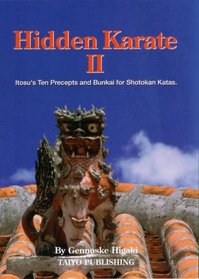Search -
Hidden Karate 2: Itosu's Ten Precepts and Bunkai for Shotokan Katas
Hidden Karate 2 Itosu's Ten Precepts and Bunkai for Shotokan Katas
Author:
Both Hidden Karate 1 and 2 became the most well known and revolutionary books on bunkai in Japan. This 2nd volume rediscovers karate from two directions. The first direction reexamines the true nature of karate as it was intended through an easy to understand explanation of Anko Itosu s 10 Precepts which he wrote 100 years ago when karate was op... more »
Author:
Both Hidden Karate 1 and 2 became the most well known and revolutionary books on bunkai in Japan. This 2nd volume rediscovers karate from two directions. The first direction reexamines the true nature of karate as it was intended through an easy to understand explanation of Anko Itosu s 10 Precepts which he wrote 100 years ago when karate was op... more »
ISBN-13: 9784884695248
ISBN-10: 4884695240
Publication Date: 7/1/2007
Pages: 286
Rating: ?
ISBN-10: 4884695240
Publication Date: 7/1/2007
Pages: 286
Rating: ?
0 stars, based on 0 rating
Genres:




